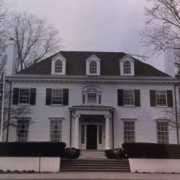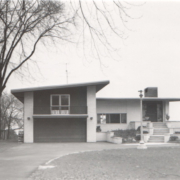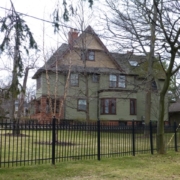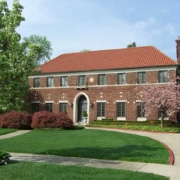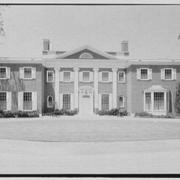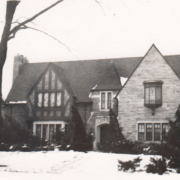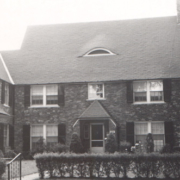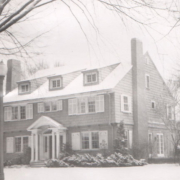Historical Architecture of Grosse Pointe – 625 Lakeshore, aka the Harry Mulford Jewett House
During the late nineteenth and early twentieth Century two very different styles of homes began to appear on Lakeshore. The early Indian trail had begun to witness a tug of war between the wealthy Detroit businessmen wanting to build themselves a summer cottage and those wanting to construct a year round residence for their families next to the water. *
Land was at premium; the two vastly different types of property were replacing the original farmhouses. First came the summer cottages; typically in Queen Anne Style, they set the tone for many of the new homes that were built in the area at the ‘turn of the century’. Many of the properties were built in picturesque settings with well-manicured lawns and elegant flower gardens.
In stark contrast were the larger year round colonial revival style residences with their formal gardens. Grosse Pointe was fast becoming the place to live, and these new homes had begun to emerge, born from the desire of many families to escape the city and move to the suburbs.
The early 20th Century marked the growth of Detroit thanks to the introduction of the automobile, which marked the end of the Victorian, Queen Anne style era. Colonial revival architecture was now in vogue and many of the summer cottages that adorned Lakeshore were quickly being out numbered by year-round structures.
One early example of the new style year-round family home, which still stands proudly overlooking the lake, is house number 625 Lakeshore, Grosse Pointe Shores, also known as the Harry Mulford Jewett house – originally named ‘Maplehurst’.
The land has had a long and rich history – the earliest record of the property dates back to 1811 – from 1884 the land was used as a dairy cattle and horse farm. Harry M. Jewett purchased the land for his new home in 1907 from landowner John V. Moran.
Jewett was a prominent civil and mining engineer. In 1895 he established his own company Jewett, Bigelow and Brooks, a wholesale coal deal and mining enterprise where he made his wealth. He later joined the Paige-Detroit Motor Car Company, becoming president in 1909.
The same year he commissioned Walter MacFarlane, architect of Ridgemont, the David C. Whitney home on Lakeshore (now demolished) to build a new home on Lakeshore. MacFarlane was a formally trained architect and his busy firm (Rogers and MacFarlane) was responsible for the design of many factories, office builds and banks, along with a large number of beautiful homes in Detroit.**
MacFarlane’s design on Lakeshore is an Adams-inspired Colonial Revival, white clapboard construction. The 7,500 sqft house is a refinement of the Georgian style, similar to that of 15520 Windmill Pointe. The design features an elliptical fanlight with sidelight windows at the front door, stately Palladian-style windows, five fireplaces and beautiful moldings. There is morning room, solarium (with wonderful views of the lake), seven bedrooms, and a third-floor attic playroom. After World War 1, a large living room was added behind what is now the library; the new spacious ballroom-sized addition featured a stunning crystal chandelier.
The exterior of the house is just as impressive, boasting a boathouse on the lake, and elegant gardens complete with gazebo, while the reflecting pool ensured 625 Lakeshore was, at the time, one of Grosse Pointes most handsome homes.
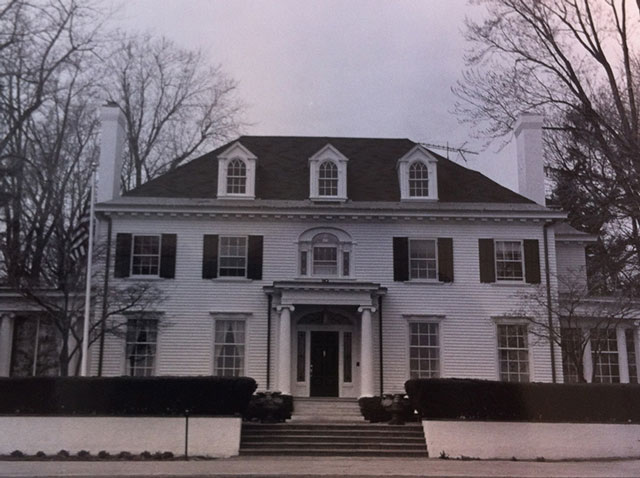
Mr. Jewett died in 1933, however his family resided in the home until 1945. Since then the home has had many owners and many renovations, but thank fully much of the past still remains. The boathouse and the original reflecting pool may be gone, but the gazebo, gardens and the house itself still stand as a perfect example of the exquisite turn of the century homes that were built in Grosse Pointe.
A few examples of the original summer cottages and the early year-round family homes still remain, although the majority of the properties have been vastly reduced in size.
Additional Facts:
* Lakeshore was originally an early Indian trail, and later became a well-traveled route along the lake. In 1851 the road became known as Jefferson Avenue, and in 1915, the section of Jefferson Avenue located in Grosse Pointe was officially named Lakeshore Rd.
** Some of Rogers and MacFarlane work includes: Morgan & Wright Bicycle Tire Company plant (later Uniroyal) the Cadillac Motor Works, the Murphy Power Plant on Congress Street (purchased by Detroit EdisonJune, 1914), the King’s China Store (L.B. King and Company Building) and the John N. Bagley House in Detroit.
The property was the venue for the Junior League of Detroit’s Designers’ Show House in 1982.
*Photos courtesy of the Higbie Maxon Agney archives unless stated.
Written by Katie Doelle
Copyright © 2015 Katie Doelle

